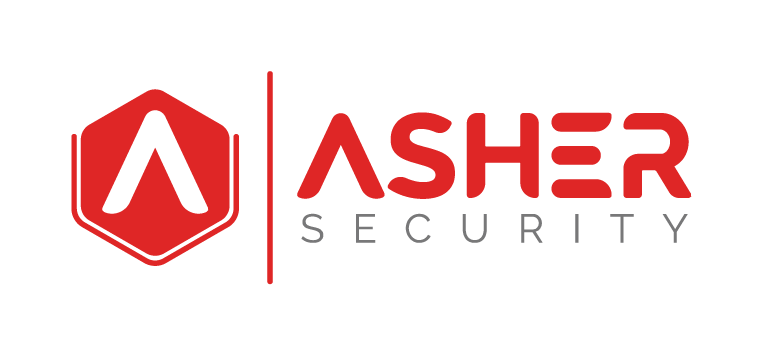Artificial Intelligence Risk Management
Looking to define artificial intelligence and its subcategories?
Download Our Artificial Intelligence Governance Playbook

Introduction
Artificial intelligence isn’t just transforming technology but also transforming the risks we face.
From predictive analytics to generative models, AI systems now drive decision-making, automate security operations, and even influence how organizations serve their customers. But with that evolution comes a new set of challenges, ones that traditional IT risk frameworks were never designed to handle.
Asher Security AI Risk Management approaches this reality head-on.
The risks of AI aren’t confined to firewalls or access controls. They emerge from flawed training data, unverified model behavior, and human overreliance on automated decisions. A poorly monitored algorithm can make biased choices, expose sensitive data, or even misclassify security alerts — each with real-world business impact.
The latest tech news, backed by expert insights
Stay informed on the latest and most impactful trends in AI, automation, data, and cybersecurity with the CYBER COLLECTIVE newsletter: your go-to source for insight and innovation.
AI Risk Management
In today’s interconnected world, the attack surface has expanded far beyond networks. Cybercriminals can now manipulate AI models, tamper with their inputs, or reverse-engineer their algorithms to extract intellectual property. These threats highlight a critical shift: AI security isn’t just about protecting data anymore; it’s about protecting the intelligence itself.
What’s more, the stakes are higher than ever. Regulatory pressure is mounting, public trust is fragile, and ethical accountability has become a boardroom concern.
Recent industry data reflects this urgency: nearly 40% of organizations cite AI-related security and compliance risks as their top barrier to adoption, and among technology leaders, that concern jumps significantly higher. It’s a clear signal that the race to innovate with AI must go hand in hand with robust risk governance and continuous assurance.
In this guide, we’ll explore how AI risk management helps organizations build resilience, establish ethical controls, and turn innovation into a competitive, not a compliance, advantage.
What Is AI Risk?
AI risk refers to the potential harms or negative outcomes arising from deploying or using AI systems. Unlike conventional IT risk, AI risk encompasses technical, ethical, operational, and regulatory dimensions. For example:
- Data risks: Poor data quality, bias, leakage of personal info
- Model risks: Model drift, overfitting, adversarial attacks
- Operational risks: Failed integration, insufficient monitoring
- Ethical and legal risks: Discrimination, lack of explainability, non-compliance
Additionally, AI risk management is the process of systematically identifying, mitigating, and addressing these threats while maximizing AI’s positive impact.
Because AI governance is broader, AI risk management operates as a key process within that discipline: the guardrails that help keep AI systems safe, ethical, and reliable.
Why AI Risk Management Matters
The use of AI has skyrocketed. And with this, so did risk. IT specialist, according to a study, believe that adopting generative Artificial Intelligence has made the chances of security breaches also increase. In another study, it was seen that a small number of people (24%) have currently secured their generative AI projects. Without proactive AI risk management, even the most promising AI initiative can backfire.
Here are key stakes:
- Security & Breach Exposure: Attackers may manipulate or exploit AI models; AI-based breaches are already being reported.
- Regulatory & Compliance Pressure: As AI regulation emerges, organizations will need to prove safe practices.
- Loss of Trust & Reputation: Errors, bias, or misuse can erode stakeholder trust.
- Operational Disruption: Model failures or unmonitored drift can lead to business interruptions.
- Sector-Specific Risks: In sensitive fields like healthcare , AI risk must address patient data, diagnostic accuracy, and clinical safety.
Download our Artificial Intelligence Governance Playbook
Core Components of an AI Risk Management Framework
To manage AI risk holistically, you need to choose the framework to use. These frameworks are sets of guidelines and practices that help in managing risk in the entire AI lifecycle. It is basically an Artificial Intelligence Governance playbook that helps outline policies, roles and responsibilities, and procedure of use of AI in an organization.
For example, you can adapt principles from NIST’s AI Risk Management Framework (AI RMF). The RMF provides a voluntary but structured approach to embedding trust and risk controls across the AI lifecycle.
Below is a high-level adaptation aligned with Asher Security’s philosophy
|
Phase |
Objective |
Key Activities |
|
Govern |
Establish oversight, roles & culture |
Define risk appetite, assign ownership, align AI strategy |
|
Map |
Identify AI uses and corresponding risks |
Catalog AI assets, assess context, map threats & impacts |
|
Measure |
Quantify risk levels |
Score likelihood & impact, monitor metrics, validate models |
|
Manage |
Mitigate and control risks |
Deploy controls, policy enforcement, incident planning |
|
Review & improve |
Continuous feedback and update |
Audits, monitoring drift, re-assess and adapt policies |
These phases align with RMF’s core functions: Govern, Map, Measure, Manage.
AI Risk Assessment: Process & Methodology
To practice AI risk management, you need a robust AI risk assessment process. Here’s how we approach it:
- Inventory & Scoping
Start by cataloging all AI systems — models, tools, cloud services, embedded AI. For example, generative models, predictive analytics, decision engines. Classify by sensitivity and business impact.
- Threat & Vulnerability Analysis
For each AI system, identify threats (adversarial attacks, data poisoning, misuse) and vulnerabilities (weak data validation, lack of input sanitization). Consider both internal and external vectors, including cloud risk exposure.
- Impact & Likelihood Scoring
Score each risk on:
- Likelihood: probability of occurrence
- Impact: severity of consequences
Multiply or combine to prioritize. Risks with high impact × high likelihood rise to the top.
- Risk Triage & Treatment
Focus on top-tier risks. For each, define mitigation strategies:
- Technical controls (e.g. input validation, differential privacy)
- Monitoring (drift detection, alerting)
- Governance (AI policy, review boards)
- Redundancy, fallback systems
- Documentation & Governance
Maintain a risk register — every AI-associated risk, its scores, mitigation status, and ownership. Integrate this register into your governance workflows and compliance reporting.
- Continuous Monitoring & Feedback
AI models evolve and drift, and new threats emerge. Set up real-time telemetry, periodic re-assessments, audits, and policy reviews to adapt as needed.
This iterative assessment is central to Asher Security AI risk assessment and part of our risk management services.
Risk of AI in Cloud Environments
Many AI systems run on cloud infrastructure. Cloud risk introduces layers of complexity:
- Data residency & jurisdiction: Ensure your data handling aligns with regulatory zones.
- Access & identity controls: Enforce least privilege, multi-factor authentication.
- Model hosting vulnerabilities: Cloud compute or API endpoints may be attacked or misconfigured.
- Shared infrastructure risk: Multi-tenant environments carry cross-tenant exposure.
- Logging, traceability, auditability: You must log AI operations, inputs, decisions, and changes to comply and debug.
When designing AI risk management in your cloud architecture, integrate cloud security frameworks alongside AI controls.
AI in Sensitive Domains: Healthcare Case Study
Consider AI in healthcare: the risk of AI in healthcare is magnified because:
- Errors may directly impact patient health and safety.
- Medical data is highly regulated and privacy-sensitive.
- Model explainability is crucial for clinician trust and liability.
To manage risk here, Asher Security would:
- Classify medical AI use cases by criticality (diagnosis vs administrative).
- Apply stricter data controls and anonymization.
- Require model transparency, human-in-the-loop oversight, and clinical validation.
- Monitor for drift or anomaly closely e.g. detect if model outputs deviate from medical norms.
- Document all decisions, audits, and retraining cycles for compliance.
This approach ensures AI’s benefits such as faster diagnosis or workload reduction, can be realized without jeopardizing patient care or compliance.
Balancing AI Benefits vs Risk
AI offers substantial advantages: predictive power, automation of repetitive tasks, cost savings, and innovation. But benefits must be weighed against risks carefully:
- Overreemphasis on benefit without control leads to catastrophic missteps.
- Risk management enables scaled adoption by containing exposure.
- The best AI use is not the riskiest — you want high reward with manageable risk.
Thus, Asher Security AI risk management is a balancing act: encourage AI deployment, but within structured boundaries.
Integrating with Compliance & Governance
AI risk management cannot live in isolation. To be sustainable, it must connect with your broader risk management and compliance architecture:
- Align AI risk controls with existing GRC (governance, risk, compliance) systems.
- Use compliance frameworks (e.g. HIPAA for healthcare, GDPR, industry regulation) as reference baselines.
- Map AI controls to audit requirements.
- Report upward to audit committees or board oversight.
- Ensure policy, training, and enforcement are all part of governance.
By doing this, AI risk management becomes part of the organization’s fabric not an afterthought.
Common AI Risks and Mitigation Examples
To bring this to life, here are some typical AI risks and how we mitigate them:
- Bias & fairness: Training data may reflect historical bias. Mitigation: fairness testing, debiasing, oversight.
- Adversarial attacks: Malicious input crafted to mislead the model. Mitigation: adversarial training, input sanitization.
- Model drift / concept drift: Performance degrades over time. Mitigation: continuous monitoring and retraining thresholds.
- Data leaks / exposure: Sensitive data inadvertently exposed. Mitigation: data masking, encryption, anonymization.
- Explainability & transparency shortfall: AI decisions obscure. Mitigation: use models or tools that allow tracing, explanation, documentation.
- Operational failure: AI downtime or failure. Mitigation: fallback systems, manual override, redundancy.
IBM highlights 10 major AI dangers including bias, privacy, IP infringement, and security threats. IBM
Measuring Maturity & Roadmap
To know how well you’re doing in AI risk, you need a maturity model. Some organizations adopt frameworks layered atop NIST RMF to benchmark where they are and chart growth.
A maturity model might rate domain: governance, risk assessment, monitoring, training, controls — from “Initial / Ad hoc” to “Optimized / Predictive.”
As you grow, move from manual controls to automation, from reactive risk mitigation to proactive detection and prevention.
Challenges & Considerations
Building AI risk management isn’t easy. Some obstacles:
- Lack of internal understanding or expertise
- Fast-moving AI ecosystem with new models & attack methods
- Balancing data utility vs privacy
- Regulatory uncertainty
- Scalability of controls over many AI systems
We manage these by prioritizing, piloting controls, using robust frameworks, and evolving continually.
The latest tech news, backed by expert insights
Stay informed on the latest and most impactful trends in AI, automation, data, and cybersecurity with the CYBER COLLECTIVE newsletter: your go-to source for insight and innovation.
Conclusion & Call to Action
AI isn’t going away but unchecked risk will stop you from benefiting safely. With Asher Security AI Risk Management, you gain a structured, proven approach to deploying AI responsibly. You can unlock innovation while preserving security, compliance, and trust.
If you’re ready to take control of AI risk in your organization, particularly in regulated domains or cloud environments, reach out now.
Let’s build your AI risk roadmap together.

Recent Comments